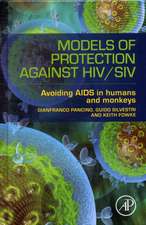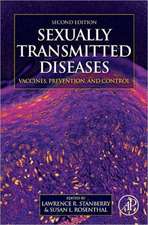Understanding the HIV/AIDS Epidemic in the United States: The Role of Syndemics in the Production of Health Disparities: Social Disparities in Health and Health Care
Editat de Eric R. Wright, Neal Carnesen Limba Engleză Hardback – 9 aug 2016
| Toate formatele și edițiile | Preț | Express |
|---|---|---|
| Paperback (1) | 782.10 lei 6-8 săpt. | |
| Springer International Publishing – 7 iun 2018 | 782.10 lei 6-8 săpt. | |
| Hardback (1) | 788.09 lei 6-8 săpt. | |
| Springer International Publishing – 9 aug 2016 | 788.09 lei 6-8 săpt. |
Preț: 788.09 lei
Preț vechi: 961.09 lei
-18% Nou
Puncte Express: 1182
Preț estimativ în valută:
150.79€ • 157.46$ • 124.52£
150.79€ • 157.46$ • 124.52£
Carte tipărită la comandă
Livrare economică 15-29 aprilie
Preluare comenzi: 021 569.72.76
Specificații
ISBN-13: 9783319340029
ISBN-10: 3319340026
Pagini: 471
Ilustrații: X, 302 p. 16 illus.
Dimensiuni: 155 x 235 x 19 mm
Greutate: 0.62 kg
Ediția:1st ed. 2016
Editura: Springer International Publishing
Colecția Springer
Seria Social Disparities in Health and Health Care
Locul publicării:Cham, Switzerland
ISBN-10: 3319340026
Pagini: 471
Ilustrații: X, 302 p. 16 illus.
Dimensiuni: 155 x 235 x 19 mm
Greutate: 0.62 kg
Ediția:1st ed. 2016
Editura: Springer International Publishing
Colecția Springer
Seria Social Disparities in Health and Health Care
Locul publicării:Cham, Switzerland
Cuprins
Chapter 1. Understanding the HIV/AIDS Epidemic in the United States: The Role of Syndemics in Shaping the Public’s Health; Eric R. Wright, Neal Carnes, and Matthew Colón-Diaz.- Chapter 2.An Historical Overview of the Epidemiology of HIV/AIDS in the United States; Jamal Jones and Laura Salazar.- Chapter 3. Gay Men and Men Who Have Sex with Men: Intersectionality and Syndemics; Neal Carnes.- Chapter 4. The Role of Syndemic in Explaining Health Disparities among Bisexual Men: A Blueprint for a Theoretically Informed Perspective; Mackey Friedman and Brian Dodge.- Chapter 5. It’s Not Just about Condoms and Sex: Using Syndemic Theory to Examine Social Risks of HIV among Transgender Women; Dana Hines and Maura Ryan.- Chapter 6.The Social, Structural, and Clinical Context of HIV Prevention and Care for Black/African American and Hispanic Women/Latinas in the United States; Tiffiany Aholou, Ashley Murray, and Madeline Sutton.- Chapter 7. Sex Workers; Paul Draus and Juliette Roddy.- Chapter 8. A Syndemic Approach to Understanding HIV/AIDS among People Who Inject Drugs in the U.S.; Enrique Pouget and Alex Bennett.- Chapter 9. Understanding the Syndemic Connections between HIV and Incarceration among African American Men, especially African American Men Who Have Sex with Men; Erin McCarthy, Janet Myers, Keith Reeves, and Barry Zach.- Chapter 10. People with Serious Mental Illness; Karen McKinnon, Katherine Elkington, Francine Cournos, Veronica Pinho, Mark Guimaraes, and Milton Wainberg.- Chapter 11. HIV Housing Helps End Homelessness and HIV/AIDS in the United States; Julie Hilvers, Christine George, and Arturo Bendixen.- Chapter 12. The Potential and Limitations of Syndemic Theory in HIV/AIDS; Neal Carnes and Eric R. Wright.
Textul de pe ultima copertă
This book examines the HIV/AIDS epidemic in the United States using the concept of syndemics to contextualize the risk of both well-known, and a few lesser-known, subpopulations that experience disproportionately high rates of HIV and/or AIDS within the United States. Since discovery, HIV/AIDS has exposed a number of social, psychological, and biological aspects of disease transmission. The concept of “syndemics,” or “synergistically interacting epidemics” has emerged as a powerful framework for understanding both the epidemiological patterns and the myriad of problems associated with HIV/AIDS around the world and within the United States. The book considers the disparities in HIV/AIDS in relation to social aspects, risk behavior and critical illness comorbidities. It updates and enhances our understanding of the HIV/AIDS epidemic in the United States and contributes to the expanding literature on the role of syndemics in shaping the public’s health.
Caracteristici
Offers a substantively-focused introduction to syndemic theory Is a timely contribution given the growing research and interest in the theoretical and empirical framework of syndemics Offers new theoretical insights regarding the undercurrents in the at-risk communities Is of interest to researchers interested in health disparities and investigators and theoreticians involved in studying syndemics Includes supplementary material: sn.pub/extras










